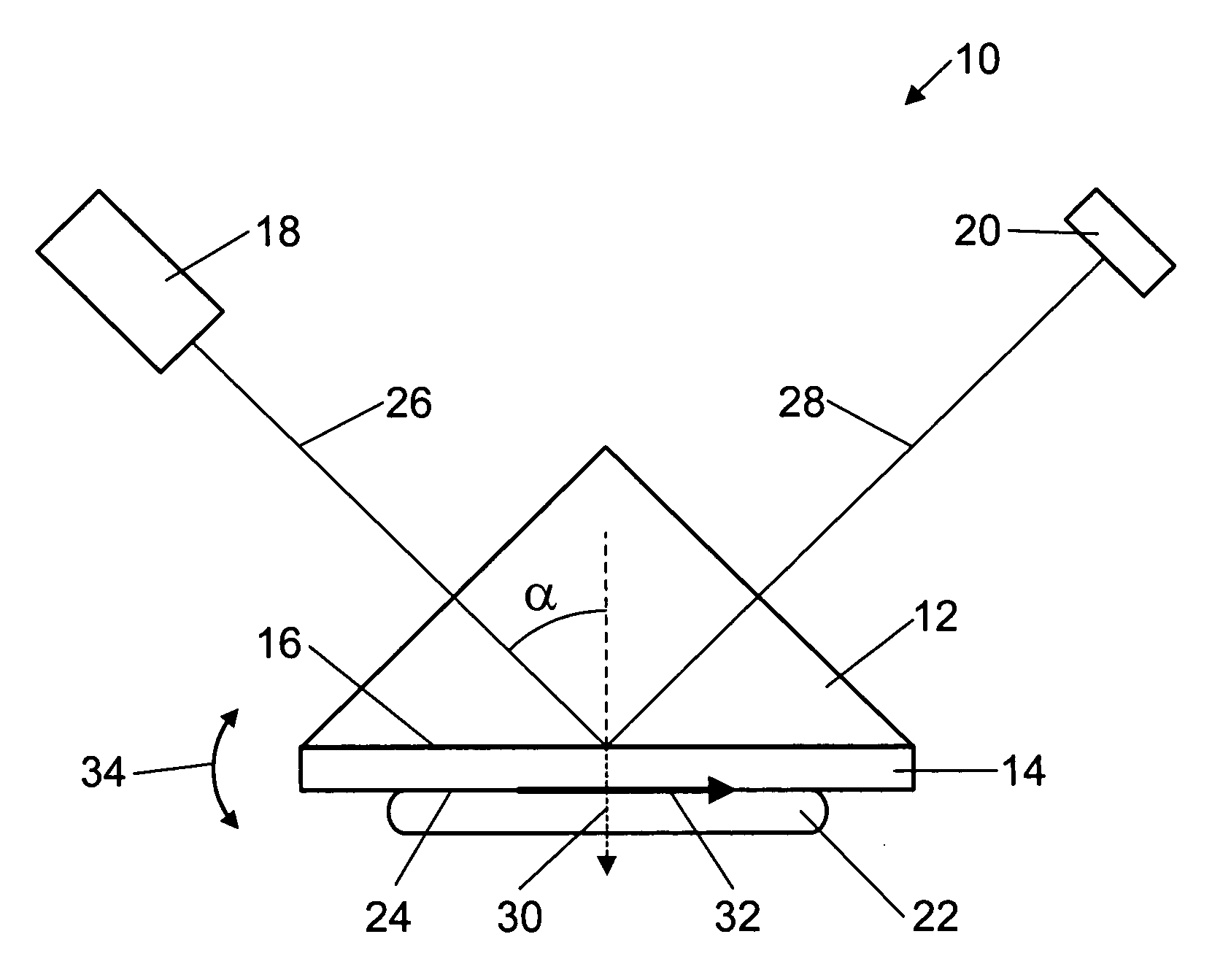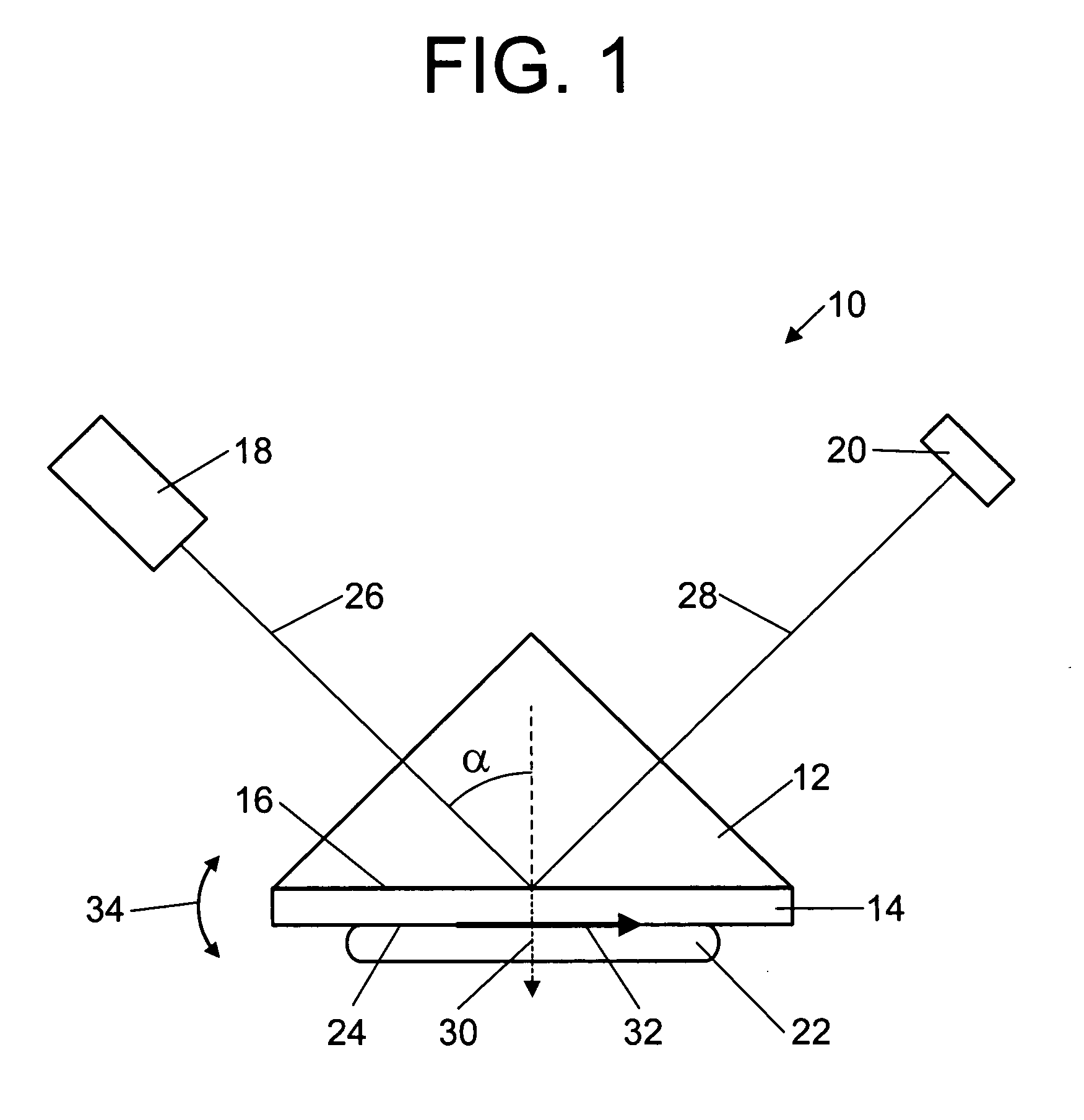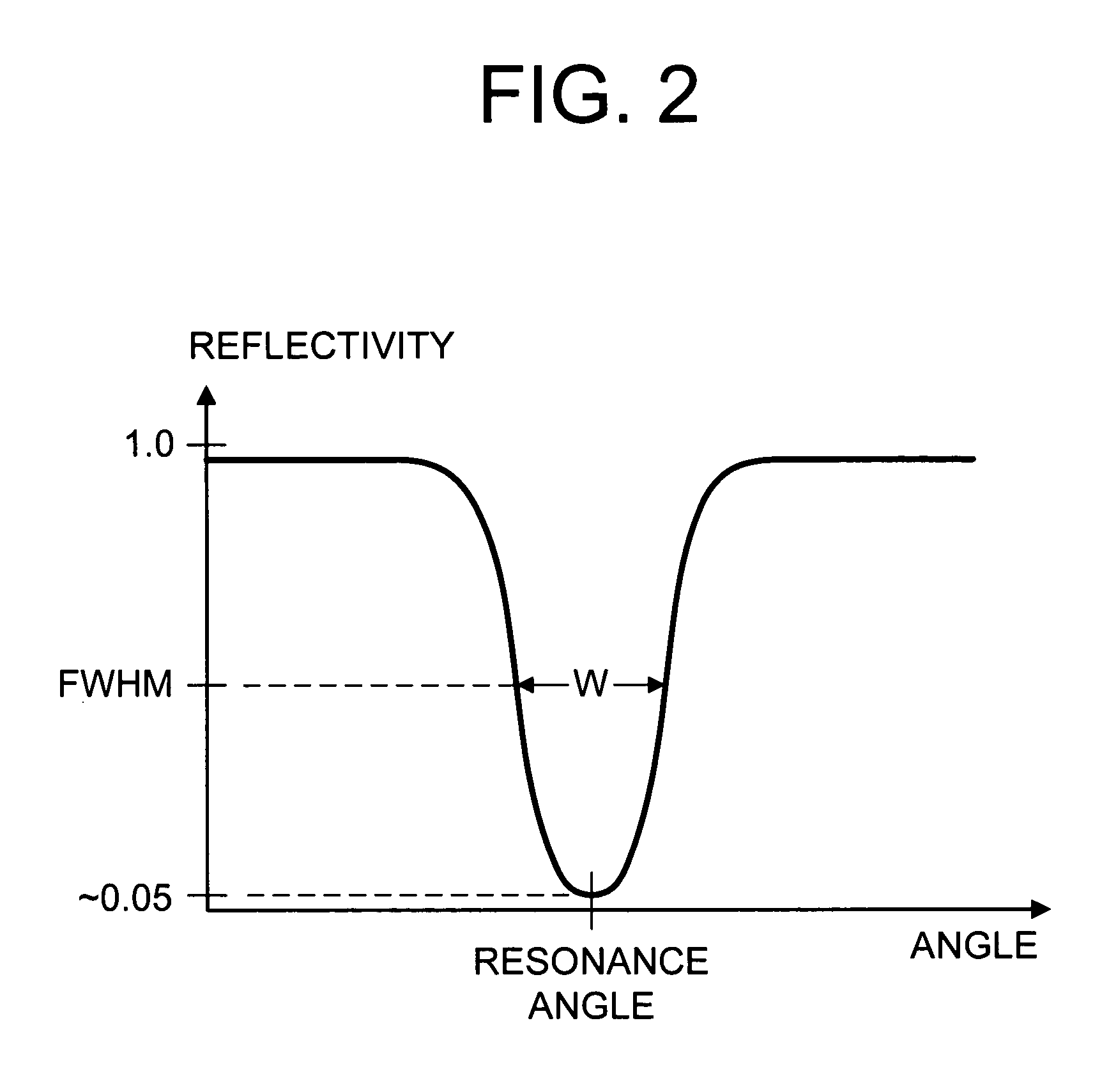Surface plasmon resonance biosensor using coupled surface plasmons to decrease width of reflectivity dip
a surface plasmon and biosensor technology, applied in the field of surface plasmon resonance biosensors, can solve the problems of sharp dip in the reflectivity of the conducting layer, and achieve the effect of increasing the sensitivity of the surface plasmon resonance biosensor and reducing the width of the reflectivity dip
- Summary
- Abstract
- Description
- Claims
- Application Information
AI Technical Summary
Benefits of technology
Problems solved by technology
Method used
Image
Examples
Embodiment Construction
[0015] Reference will now be made in detail to embodiments in accordance with the invention, examples of which are illustrated in the accompanying drawings, wherein like reference numerals refer to the like elements throughout. The embodiments in accordance with the invention are described below.
[0016]FIG. 1 shows a surface plasmon resonance biosensor 10 in accordance with the invention which includes a prism 12, a conducting layer 14 contacting one face 16 of the prism 12, a light source 18, and a detector 20. A sample 22 contacts the conducting layer 14 and forms a conducting layer / sample interface 24. The light source 18 emits a collimated monochromatic incident light beam 26 having a wavelength λ0. The light source 18 may be a laser, for example. The incident light beam 26 enters the prism 12 and is incident on the face 16 of the prism 12 contacting the conducting layer 14 at an incident angle α where it is reflected to form a reflected light beam 28 which is detected by the de...
PUM
 Login to View More
Login to View More Abstract
Description
Claims
Application Information
 Login to View More
Login to View More - R&D
- Intellectual Property
- Life Sciences
- Materials
- Tech Scout
- Unparalleled Data Quality
- Higher Quality Content
- 60% Fewer Hallucinations
Browse by: Latest US Patents, China's latest patents, Technical Efficacy Thesaurus, Application Domain, Technology Topic, Popular Technical Reports.
© 2025 PatSnap. All rights reserved.Legal|Privacy policy|Modern Slavery Act Transparency Statement|Sitemap|About US| Contact US: help@patsnap.com



